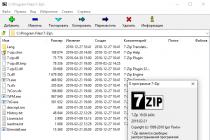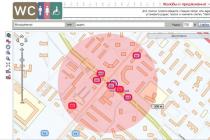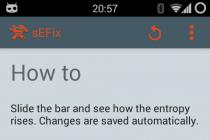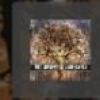Testing by topic
« Fundamentals of Algorithmization and Object-Oriented Programming »
Students should know:
definition of the algorithm and its main properties;
ways of writing algorithms;
the purpose of programming languages, programming systems;
program structure;
operators of input, output, assignment;
algorithmic structures;
variable types ;
functions in object-oriented and procedural programming languages.
Evaluation criteria:
Rating "3" - for 7-10 correct answers;
Rating "4" - for 11-13 correct answers;
Rating "5" - for 14-15 correct answers;
Answers to the test:
Option 1
the questionAnswer
Option 2
the questionAnswer
1. The algorithm is:
a) rules for performing certain actions;
b) directed graph, indicating the order of execution of a certain set of commands;
c) a clear and accurate instruction to the performer to perform a sequence of actions aimed at achieving the set goals;
d) a set of commands for the computer.
2. An algorithm is called cyclic if:
3. The property of the algorithm is:
a) effectiveness;
b) cyclicity;
c) the ability to change the sequence of command execution;
d) the possibility of executing the algorithm in reverse order.
4. A fragment of the algorithm is shown in the form of a block diagram.
Determine what is the value of the variableS
a) 12
b) 3
at 4
d) 8
5. In a program written in an object-oriented programming languageVB, the property of the object is
a) Selection
b) Characters (i)
v)Bold
G)True
6. What is the value of the variableSwill be printed
Basic?
a)5
b)7
v)9
G)12
7. A fragment of the algorithm is shown in the form of a block diagram.
Determine what value of variable A will be
printed as a result of the execution of the algorithm.
a)1
b)2
v)3
G)4
14. What is the meaning of executing a fragment of a program in BASIC?
8. In an object-oriented program
programming languageVB, the object is ...
a) Form1
b) Print
v) Command1_Click ()
G)Int
9. Identification of errors and their elimination is called ...
a) debugging the task; c) debugging the algorithm
b) debugging the performer; d) debugging the program?
10. A person, a robot, an automaton, a device, a computer that executes someone's commands - this is ...
a) assistant c) program
b) performer d) slave
11. A repeating block of actions (commands) is called ...
a) repetition; c) the body of the cycle;
b) a cycle; d) repetition command
12. The totality of all commands that a specific performer can execute is ...
a) program system; c) command system;
b) a system of algorithms; d) system of tasks
13. The command for which actions are performed after checking the condition is called ...
a) by the cycle command; c) the branching command;
b) a simple command; d) procedure
14. The property of an algorithm that the algorithm must consist of specific actions that follow in a specific order is called
a) discreteness;
b)determinism;
v) limb;
G) mass character;
e)effectiveness.
15. The property of an algorithm that the same algorithm can be used with different input data is called
a) discreteness;
b)determinism;
v) limb;
G) mass character;
e)effectiveness.
1. An algorithm is called linear if:
a) it is composed in such a way that its implementation involves repeated repetition of the same actions;
b) the course of its implementation depends on the truth of certain conditions;
c) his commands are executed in the order of their natural succession one after another, regardless of any conditions;
d) it is presented in tabular form.
2. The algorithm includes branching if:
a) it is composed in such a way that its implementation involves repeated repetition of the same actions;
b) the course of its implementation depends on the truth of certain conditions;
c) his commands are executed in the order of their natural succession one after another, regardless of any conditions;
d) it is presented in tabular form.
3. Replace the ellipsis with a suitable answer for the following statement: "Any performer is not required to ...":
a) follow the sequence of actions;
b) understand the meaning of the algorithm;
c) formally execute the commands of the algorithm;
d) the ability to accurately execute commands.
4. What is the value of the variableSwill be printed
after executing a program fragment onBasic?
a) 2
b) 3
at 4
d) 6
5. A fragment of the algorithm is shown in the form of a block diagram. Determine what is the value of the variableSwill be printed as a result of the execution of the algorithm.
a) 5
b) 6
at 8
d) 10
6. In a program written in an object-oriented programming languageVBobject method is ...
a) Documents ()
b) Open
v) File Name
G)" C:\NSpoba. doc"
7. What is the value of the variableSwill be printed
after executing a program fragment onBasic?
a)2
b)3
v)5
G)6
8. Writing an algorithm in the language of a specific artist is ...
a) algorithm; c) team;
b) the program; d) performer?
9. A separate instruction for the performer is ...
a) the program; c) team;
b) algorithm; d) order?
10. The form of organizing actions in which the same block is executed several times is called ...
a) following; c) branching;
b) a cycle; d) algorithm?
11. A compound command in which the same actions (commands) are repeated several times is called ...
a) the assignment command; c) a repetition command;
b) an auxiliary program; d) a branch command?
12. The support team is ...
a) cycle; c) procedure;
b) branching; d) following?
13. The graphical way to describe the algorithm is ...
a) the program; c) algorithm;
b) block diagram; d) verbal step-by-step recording?
14. The property of an algorithm that each action and the algorithm as a whole must be able to complete is called
a) discreteness;
b) determinism;
c) limb;
d) mass character;
e) effectiveness.
15. Property of the algorithm, which is the absence of errors, the algorithm must lead to the correct result for all valid input values, is called
a) discreteness;
b) determinism;
c) limb;
d) mass character;
e) effectiveness.
Ermolaeva I.A., Municipal Educational Institution "Pavlovskaya Sosh", INFORMATICS TESTS
Test on the topic "Algorithm... Properties and types of algorithms "
Option 1
The algorithm is:
a) rules for performing certain actions;
b) directed graph, indicating the order of execution of a certain set of commands;
c) a clear and accurate instruction to the performer to perform a sequence of actions aimed at achieving the set goals;
d) a set of commands for a computer;
e) computer network protocol.
Specify the most complete list of methods for recording algorithms:
a) verbal, graphic, pseudocode, software;
b) verbal;
c) graphic, software;
d) verbal, programmatic;
e) pseudocode.
efficiency thing is:
The essence of such a property of the algorithm asmassiveness thing is:
a) the algorithm must have a discrete structure (must be broken down into a sequence of separate steps);
b) when writing down the algorithm for a specific performer, you can use only those commands that are included in the system of his commands;
c) the algorithm should provide the solution of not one specific problem, but a certain class of problems of this type;
d) with the exact execution of all commands of the algorithm, the process must stop in a finite number of steps, leading to a certain result;
e) the executor of the algorithm should not make decisions that are not provided for by the creator of the algorithm.
Suhave such a property of the algorithm asdiscreteness thing is:
a) the algorithm must have a discrete structure (must be broken down into a sequence of separate steps);
b) when writing down the algorithm for a specific performer, you can use only those commands that are included in the system of his commands;
c) the algorithm should ensure the solution of not one specific problem, but a certain class of problems of this type;
d) with the exact execution of all commands of the algorithm, the process must stop in a finite number of steps, leading to a certain result;
e) the executor of the algorithm should not make decisions that are not provided for by the creator of the algorithm.
The essence of such a property of the algorithm asintelligibility thing is:
a) the algorithm must have a discrete structure (must be broken down into a sequence of separate steps);
b) when writing down the algorithm for a specific performer, you can use only those commands that are included in the system of his commands;
c) the algorithm should ensure the solution of not one specific problem, but a certain class of problems of this type;
d) with the exact execution of all commands of the algorithm, the process must stop in a finite number of steps, leading to a certain result;
e) the executor of the algorithm should not make decisions that are not provided for by the creator of the algorithm.
The essence of such a property of the algorithm asdeterminability thing is:
a) the algorithm must have a discrete structure (must be broken down into a sequence of separate steps);
b) when writing down the algorithm for a particular performer, you can use only those commands that are included in the system of his commands;
c) the algorithm should ensure the solution of not one specific problem, but a certain class of problems of this type;
d) with the exact execution of all commands of the algorithm, the process must stop in a finite number of steps, leading to a certain result;
e) the executor of the algorithm should not make decisions that are not provided for by the creator of the algorithm.
The algorithm is called linear:
The algorithm is called cyclic:
a) if it is composed in such a way that its execution involves the repeated repetition of the same actions;
b) if the course of its implementation depends on the truth of certain conditions;
c) if his commands are executed in the order of their natural succession one after another, regardless of any conditions;
d) if it is presented in tabular form;
e) if it includes an auxiliary algorithm.
The algorithm includes branching if:
a) if it is composed in such a way that its implementation involves the repeated repetition of the same actions;
b) if the course of its implementation depends on the truth of certain conditions;
c) if his commands are executed in the order of their natural succession one after another, regardless of any conditions;
d) if it is presented in tabular form;
e) if it includes an auxiliary algorithm.
An algorithm for solving some subtask, which is usually executed repeatedly, is called:
a) linear;
b) branching;
c) cyclic;
d) auxiliary;













